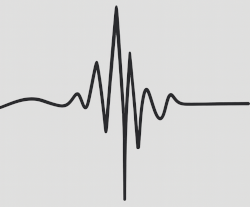6th century CE Earthquake and Tsunami


Excavations across Beirut reveal destruction layers
dating to the mid-6th century CE, associated with the
551 CE Beirut Earthquake. In Sector BEY 004,
Saghieh-Beydoun (1997) documented
soft-sediment liquefaction features, including diagnostic
flame structures
at the base of a thick destruction and debris-flow
deposit. These features, produced by pore-fluid overpressure during
seismic shaking, occur beneath deposits likely associated with
tsunami inundation. Their stratigraphic position suggests that
seismic shaking followed a tsunami, a sequence consistent with
historical accounts by
John of Ephesus and
Pseudo-Dionysius of Tell-Mahre, who report that the tsunami preceded the main shock.
Archaeological excavations throughout the city show a late
antique destruction horizon up to 1 m thick, often capped by fire
debris. According to
Mordechai (2020), the evidence reveals “an
archaeological inferno over the whole excavated area,” though the
destruction layer varies in thickness across sites. Artifacts
found within the debris — including wrapped coin rolls, a hanging
bronze polykandelon
, human and animal remains near collapsed
walls, and clusters of coins — support a mid-6th-century date
(see Mikati & Perring;
Steiner). However, some teams noted that
building collapses were not always catastrophic, citing the
absence of smashed household goods and pottery assemblages (see
Badre 2016;
Butcher & Thorpe 1997).
Post-seismic rebuilding evidence complements this destruction
record. Hall (2004) reports that mismatched column
colors in a church or
basilica
identified by Lauffray likely represent repair work after the earthquake, contrasting with
earlier descriptions by
Zacharias Rhetor (c. 465 - after 536 CE) that emphasized perfectly
matched white columns. Lauffray further proposed that the civic
basilica,
public baths, and
porticoed street
underwent repairs,
though the identification of many buildings remains uncertain
(Lauffray 1944–46).
Although
Marriner et al. (2008) reports that researchers found no discrete
tsunami deposits (tsunamites) in 20 sediment cores from Beirut’s
buried harbor, other geoarchaeological and archaeological
observations point strongly to tsunami impact. Excavations
revealed large quantities of
unabraded
Roman pottery, rubble, and
tree branches in 6th–7th century layers, suggesting rapid
high-energy deposition. Unconformable harbor muds and silts
overlying sea-scoured bedrock indicate powerful erosive currents,
likely from tsunami backwash. These findings align with reports
of major port damage, reconfiguration of harbor structures, and a
long-term decline in Beirut’s maritime infrastructure following
the event (Curvers & Stuart 2004).
Further support comes from evidence of widespread urban
disruption: many neighborhoods were left in partial ruin or
abandoned, reconstruction was limited, and trade patterns shifted
significantly in the aftermath
(Mikati & Perring 2006). Raised shoreline
dating north of Beirut shows coseismic uplift of 50–80 cm
(Morhange et al. 2006).
Synthesizing this evidence,
Salamon et al. (2024) highlight a transition
from fine-grained to coarser-grained sediments in harbor deposits,
a signal commonly linked to harbor abandonment or decline
following catastrophic events. They emphasize the presence of
sea-scoured bedrock, the absence of infrastructure, partial
abandonment, and limited rebuilding as diagnostic indicators of
tsunami impact. Reconstruction of the mid-6th-century harbor
coastline further corroborates these findings, with shoreline
positions aligning closely with modern configurations, implying
large-scale geomorphological reshaping during the event.
The combined archaeological, paleoseismic, and tsunamigenic
evidence converges on a picture of widespread destruction and
profound urban transformation in Beirut following the 551 CE
earthquake. Archaeological strata preserve signs of catastrophic
collapse, fire, and repair, while sedimentary structures document
intense shaking and possible foreshock-mainshock sequencing.
Geoarchaeological and paleoseismic data reveal tsunami erosion, harbor abandonment,
and uplift, reflecting both the earthquake’s seismic force and the
hydrodynamic power of its associated tsunami. Together, these
multidisciplinary datasets provide a coherent
narrative of one of the most devastating seismic events
in eastern Mediterranean history.

